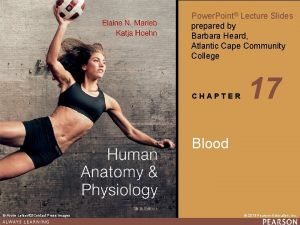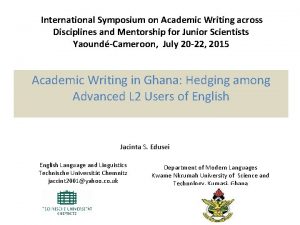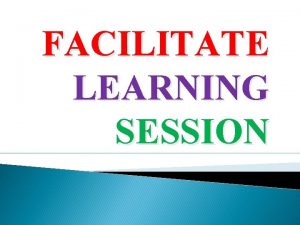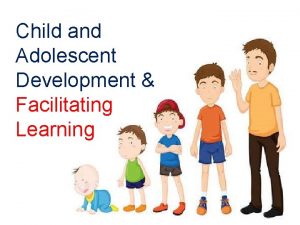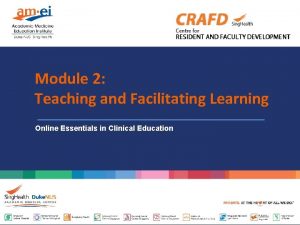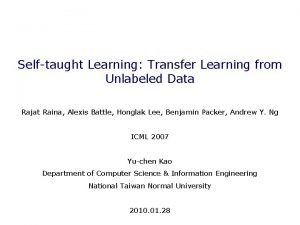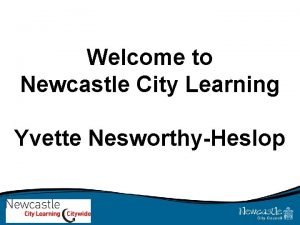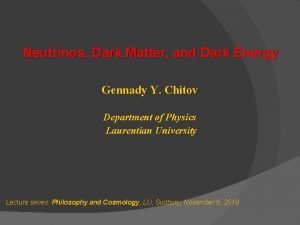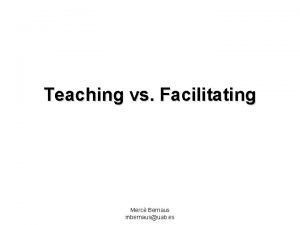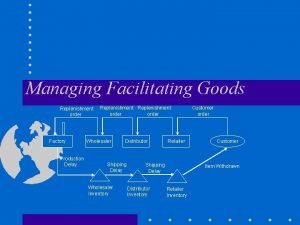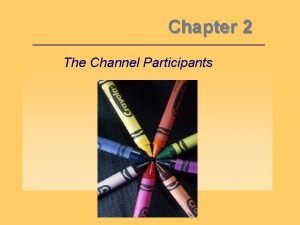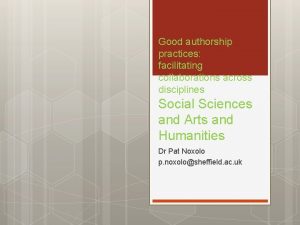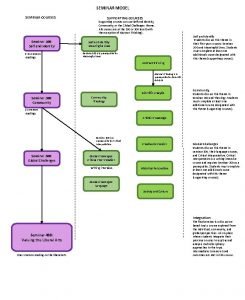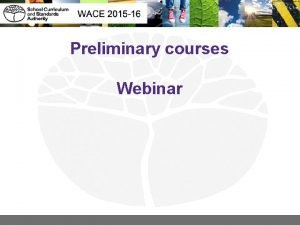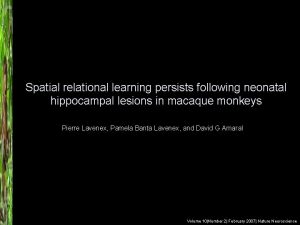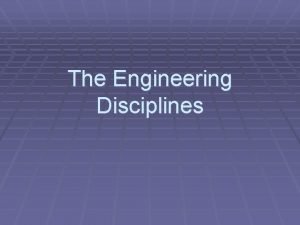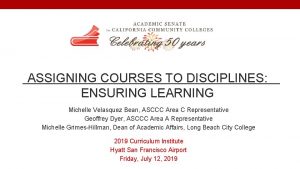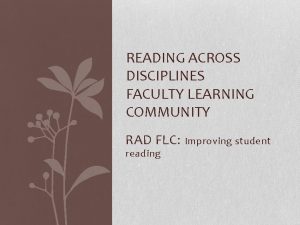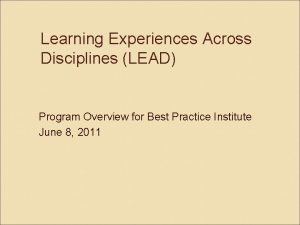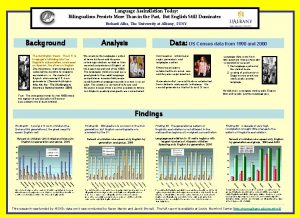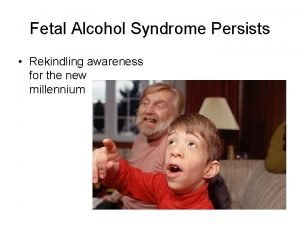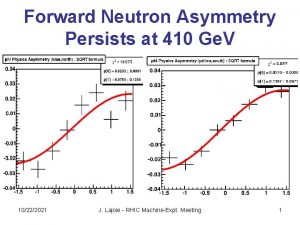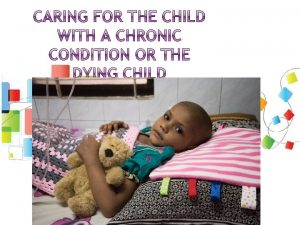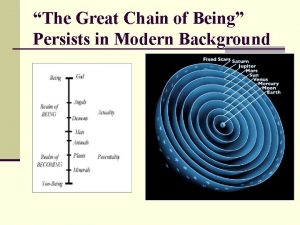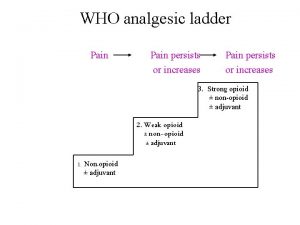Learning that Persists Facilitating Transfer Across Courses Disciplines

























- Slides: 25

Learning that Persists: Facilitating Transfer Across Courses, Disciplines, and Contexts Dr. Dana Lynn Driscoll Professor of English Director, Jones White Writing Center Indiana University of Pennsylvania dana. driscoll@iup. edu

Workshop Overview v Activity #1 - Block Activity v Part I: Introduction to Learning Transfer & Challenges v Activity #2: Key Challenges v Part II: Teaching for Transfer v Activity #3: Transfer Planning v Discussion and Questions

Opening Activity: Block Activity Once you are finished, with your partner consider: what does this teach us about learning and teaching?

Introduction to Learning Transfer & Challenges with Transfer

Workplace Disciplinary Courses Introductory Courses High School Courses

Transfer of Learning: The ability of a learner to use, repurpose, adapt, or build upon prior learning experiences in new situations

Transfer = Learning (National Research Council, 2000)

High School Englis h Colleg e Writing Course s Disciplinar y Courses with Writing Example from my discipline: Writing in the Workplace and Beyond

v “…. transfer is like an antibiotic resistant bacterium, whatever we attack it with, it won’t go away. ” (Haskell, 2001) v “Transfer of learning is universally accepted as the ultimate aim of teaching. However, achieving this goal is one of teaching’s most formidable problems. Researchers have been more successful in showing how people fail to transfer learning than they have in producing it, and teachers and employers alike bemoan students’ inability to use what they have learned. ” —Ann Mc. Keough, Judy Lupart, and Anthony Marini, Teaching for Transfer (1995) v “ 100+ years of research suggests that students are more likely to fail to transfer than to succeed. ” – Mc. Keough, Lupart, and Marini (1995)

Challenges with Transfer 1. Over-contextualization of knowledge, or lack of mindful abstraction: I learned this skill only for this course; it has no real world bearing or I can’t see the connection 2. Assumption that contexts are too different. These are entirely different skills. 3. Problematic expectations or theories of learning; (E. g. I only need to learn this once) 4. Focus on performance-based activity. Learning for a grade, once the class is over, the material goes “under the bed. ” 5. Lack of curriculum and support for learning transfer. None of these courses connect. 6. Lack of real-world connections. This only applies to this course. I’m going to memorize it for the test and forget it.

Activity: Have you experienced these or “transfer challenges” in your own teaching? How do they manifest? What areas that you see your students most struggle with regards to learning transfer? (consider making a list)

Mechanisms that Help Facilitate Transfer

What can transfer? Knowledge Practices Learner Tools and Strategies Learning Dispositions Driscoll, 2016

Mindful Abstraction New situation Specific Course Specific Learning Salomon and Perkins, 1989; Driscoll, 2013 New situation Mindful abstraction (Mindful Abstraction: taking knowledge out of a specific context and generalizing it) New situation

Mindful Abstraction Knowledge in other college classes Knowledge in other Disciplinary classes Knowledge in a specific class Specific skills for an assignment or activity Knowledge beyond College (workplace, civic, personal)

Mindful Abstraction Knowledge beyond Colleg Knowledge in College Classes Knowledge in English Classes Knowledge in a specific class Specific skills for an assignment or activity

How can we promote mindful abstraction, and thus, transfer?

For successful transfer students need: v Rich, initial learning contexts that support content development and transfer v Clear and direct activities in classes that facilitate transfer v Understanding how learning works and themselves as learners v Explicit discussion and activities that connect learning between domains v Encouraging mindful abstraction of their learning so that they can transfer v Support structures for long-term learning, to engage in connecting their learning to new places v Driscoll, 2013 Opportunities throughout the curricula to encourage transfer and cultivate a “transfer focused mindset”

Connection is the key to transfer. Your Course Transfer in Transfer within Transfer across Transfer out

Beginning of Term: Activating Prior Knowledge or “Transfer In” v Reflection and activities at beginning of course to activate prior knowledge and help students bring it into the course v Examples: v Creating a “toolkit” that a students describe at the start of the term and “add to” throughout the term (threshold concepts) v Reflecting on previous learning experiences and key knowledge v Asking them to engage with use prior knowledge and then showing how it will be built upon in course v Activities that require them to draw upon previous prerequisite course knowledge (accountability) Driscoll, 2016; Haskell 2001

Mindful Abstraction v v v Disciplinary: Drawing upon real-world examples and real-world experts v Interviewing professionals practicing in the field v Professional problems and case studies v Professional practices, statements, procedures v Interviewing and internship experiences General Education: Stressing professional competencies gained through coursework v Connection of skills to career goals v Developing a professional knowledge base v Encouraging transfer between concurrent courses After any such practices: v Reflection on what they learned, integrating this knowledge, and moving forward with it Salomon and Perkins, 1989; Driscoll, 2011

Encouraging “Transfer out” v Asking students to use the same developing skillset for a variety of different problems in the course to “generalize” the knowledge v Encouraging transfer between courses and subjects v Encouraging transfer between college and workplace/professional contexts v Reflective activity and self-identity as a growing professional with a key set of expertise v Reflect on the learning in the course and where it goes next

Activity v Consider building several activities into your course (or other educational experience). Choose one or more of the three: v Design a “transfer in” activity or assignment that focuses on prior knowledge and activating (or adapting/expanding) what students already know v Design a “mindful abstraction” activity or assignment that helps students take knowledge from you course beyond a specific activity or assignment during the semester v Design a “transfer out” activity or assignment that fosters mindful abstraction and primes them for detecting, electing, and connecting to new contexts beyond the course/semester

Questions and Discussion

References v v v v De. Palma, M. J. and Ringer, J. (2011). Toward a theory of adaptive transfer: Expanding disciplinary discussions of ‘‘transfer’’ in second-language writing and composition studies. Journal of Second Language Writing, 20, 134 -147. doi: 10. 1016/j. jslw. 2011. 02. 003 De. Palma, M. J. and Ringer, J. (2013). Adaptive transfer, genre knowledge, and implications for research and pedagogy: A response. Journal of Second Language Writing, 22, 465 -470. Driscoll, D. L. , & Harcourt, S. (2012). Training vs. learning: Transfer of learning in a peer tutoring course and beyond. Writing Lab Newsletter, 36(7– 8), 1– 6. http: //dx. doi. org/10. 1016/j. jslw. 2013. 09. 002 Driscoll, D. L. (2017). Ideals and realities in students’ literacy development: Writing Center/ELT collaborations to support learning transfer. TESOL Arabia Perspectives. Vol 24 No. 3, November Issue. Driscoll, D. L. and Powell, R. (2016). States, traits, and dispositions: The impact of emotion on writing development and writing transfer across college courses and beyond. Composition Forum (Special Issue on Emotions) 34. Haskell, R. E. (2000). Transfer of learning: Cognition and instruction. New York: Academic Press. Herrington, A. J. (1985). Writing in academic settings: A study of the context for writing in two college chemical engineering courses. Research in the Teaching of English, 19, 331– 361. Herrington A. J. & Curtis, M. (1990). Persons in Process. Urbana, IL: NCTE Haskell, R. E. (2000). Transfer of learning: Cognition and instruction. New York: Academic Press. National Research Council. (2000). How people learn: Brain, mind, experience, and school: Expanded edition. National Academies Press. James, M. (2006). Teaching for transfer in ELT Journal, 60. 2, 151 -159. doi: 10. 1093/elt/cci 102 Perkins, D. N. , & Salomon, G. (2012). Knowledge to go: A motivational and dispositional view of transfer. Educational Psychologist, 47(3), 248– 258. doi: 10. 1080/00461520. 2012. 693354 Thompson, I. and Malkewicz, M. J. (2015). Talk about Writing. New York: Routledge.
 A clot that develops and persists in an unbroken vessel
A clot that develops and persists in an unbroken vessel Academic english reading and writing across the disciplines
Academic english reading and writing across the disciplines Organizational patterns in reading
Organizational patterns in reading Facilitating learning session
Facilitating learning session Scaffold and fade-away technique
Scaffold and fade-away technique Facilitating learning module 2
Facilitating learning module 2 Ngoại tâm thu thất chùm đôi
Ngoại tâm thu thất chùm đôi Block av độ 1
Block av độ 1 Thơ thất ngôn tứ tuyệt đường luật
Thơ thất ngôn tứ tuyệt đường luật Thơ thất ngôn tứ tuyệt đường luật
Thơ thất ngôn tứ tuyệt đường luật Chiến lược kinh doanh quốc tế của walmart
Chiến lược kinh doanh quốc tế của walmart Tìm vết của mặt phẳng
Tìm vết của mặt phẳng Con hãy đưa tay khi thấy người vấp ngã
Con hãy đưa tay khi thấy người vấp ngã Tôn thất thuyết là ai
Tôn thất thuyết là ai Gây tê cơ vuông thắt lưng
Gây tê cơ vuông thắt lưng Sau thất bại ở hồ điển triệt
Sau thất bại ở hồ điển triệt Self-taught learning: transfer learning from unlabeled data
Self-taught learning: transfer learning from unlabeled data Newcastle city learning
Newcastle city learning Https //courses.lumen learning.com
Https //courses.lumen learning.com Cuadro comparativo e-learning y b-learning
Cuadro comparativo e-learning y b-learning Teaching vs facilitating
Teaching vs facilitating Facilitating goods examples
Facilitating goods examples Facilitating agencies in marketing channel
Facilitating agencies in marketing channel Types of channel participants
Types of channel participants Marketing channel concept
Marketing channel concept What are the factors affecting communication process
What are the factors affecting communication process
